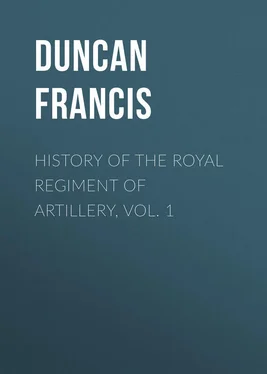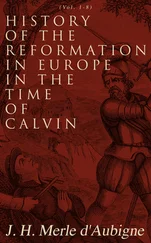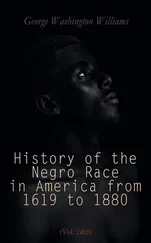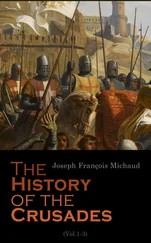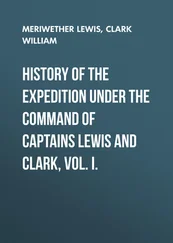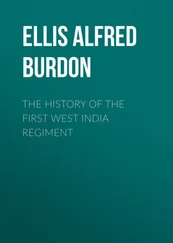Francis Duncan - History of the Royal Regiment of Artillery, Vol. 1
Здесь есть возможность читать онлайн «Francis Duncan - History of the Royal Regiment of Artillery, Vol. 1» — ознакомительный отрывок электронной книги совершенно бесплатно, а после прочтения отрывка купить полную версию. В некоторых случаях можно слушать аудио, скачать через торрент в формате fb2 и присутствует краткое содержание. Жанр: foreign_antique, foreign_prose, на английском языке. Описание произведения, (предисловие) а так же отзывы посетителей доступны на портале библиотеки ЛибКат.
- Название:History of the Royal Regiment of Artillery, Vol. 1
- Автор:
- Жанр:
- Год:неизвестен
- ISBN:нет данных
- Рейтинг книги:4 / 5. Голосов: 1
-
Избранное:Добавить в избранное
- Отзывы:
-
Ваша оценка:
- 80
- 1
- 2
- 3
- 4
- 5
History of the Royal Regiment of Artillery, Vol. 1: краткое содержание, описание и аннотация
Предлагаем к чтению аннотацию, описание, краткое содержание или предисловие (зависит от того, что написал сам автор книги «History of the Royal Regiment of Artillery, Vol. 1»). Если вы не нашли необходимую информацию о книге — напишите в комментариях, мы постараемся отыскать её.
History of the Royal Regiment of Artillery, Vol. 1 — читать онлайн ознакомительный отрывок
Ниже представлен текст книги, разбитый по страницам. Система сохранения места последней прочитанной страницы, позволяет с удобством читать онлайн бесплатно книгу «History of the Royal Regiment of Artillery, Vol. 1», без необходимости каждый раз заново искать на чём Вы остановились. Поставьте закладку, и сможете в любой момент перейти на страницу, на которой закончили чтение.
Интервал:
Закладка:
In a later warrant of the same year, when a larger number of these vessels was ordered to the Mediterranean, a Firemaster at 8 s. per diem was placed over the fireworkers, and a few conductors of stores were added.
A further addition was made in 1704 to the train in Holland, showing the increased appreciation of the services of the Artillery. It consisted of six brass culverins and four 3-pounders, with two gentlemen of the Ordnance, sixteen gunners, and sixty of their assistants, the matrosses. Two more artificers were also added.
An idea of the Artillery train under Marlborough's own command can be obtained from the above dry details, and when compared with the proportions of Artillery in the armies of more recent times, Marlborough's train excites a smile. The value of Artillery in the field had not yet been learned, while the cumbrous nature of its equipment was painfully present to every General. Not until Napoleon came on the scene did Artillery assume its proper place in European armies; not until the Franco-German War of 1870 did it assume its proper place in European opinion.
But equally interesting with the details of the train which Marlborough commanded are those of the trains, which, as Master-General of the Ordnance, he prepared for expeditions and services under other commanders, in the stormy time which was hushed to rest by the Peace of Utrecht.
When the expedition to Portugal, ordered in 1703, but which did not take place till the following year, was decided on, the armament selected consisted merely of five brass sakers, and one 5¼-pounder.
For this small battery, a somewhat eccentric detail of attendants was ordered, characterized by the marked absence of Artillery officers . They were as follows: – One commander, styled commander-in-chief, with a daily pay of 1 l. ; six engineers, with 10 s. each; a commissary of stores, five bombardiers, twenty gunners, and ten miners. The absence of matrosses in this detail is also remarkable. The deficiencies in this train soon became apparent, for in 1705 we find it was reinforced by a captain, a lieutenant, a fireworker, a surgeon, and forty-two matrosses, with a proportion of non-commissioned officers. And with the reinforcement came six mountain 3-pounders – guns, which from this time and for many years were familiarly known as grasshoppers.
Among the other musty warrants of this time, calling upon "our entirely-beloved Master-General of the Ordnance, John Duke of Marlborough," to furnish various trains and necessaries, one short one on the 3rd October, 1704, has a peculiar interest. Intelligence had just been received of the capture of Gibraltar by Sir George Rooke, and it became necessary to send, for the better protection of the Rock, a few guns, and some men familiar with their use. In this year, 1872, seven Batteries of Artillery, each numbering 160 men when complete, are considered necessary, the lesson not having yet been forgotten, which was taught by the great siege, when five weak companies were all the Artillery in the garrison, and gunners had to be improvised out of the ranks of the Infantry. But the force during the great siege was lavish compared with that deemed sufficient at first "for the better defence of y esaid place." One chief engineer, Talbot Edwards by name, a storekeeper and his clerk, two fireworkers, six bombardiers, and fifty-five gunners, were at first deemed sufficient Artillery force for the defence of a place whose chief means of protection lay in its guns. Half-a-dozen brass 13-inch mortars, and four-and-twenty guns on ship carriages, varying from 6-pounders to 24-pounders, constituted the armament sent from England.
In April of the following year the Master-General was called upon to furnish a train for that romantic expedition to Spain under the brilliant Earl of Peterborough, the services of which afterwards at the capture of Barcelona called forth such commendation. It was a very small one. In a corps of 5000 men the following was the proportion of Artillery: – One colonel, one adjutant, two engineers, a commissary, a paymaster, four conductors, one master-gunner, four sergeants, four corporals, ten gunners, one firemaster, one fireworker, two bombardiers, two carpenters, three wheelwrights, two smiths, and a collar-maker. Mortars on travelling carriages were used by this train, and a considerable number of sets of men-harness which accompanied it suggests the idea that the services of the other troops, or the peasantry, were enlisted, when necessary, to move the train from place to place.
In May, 1706, 11,000 men under the command of Earl Rivers were ordered to sail from Plymouth on a wild and futile scheme for the invasion of France. The following was the proportion of Artillery considered necessary for this force by the Board over which Marlborough presided. The guns were forty-six in number, including twenty 24-pounders, six culverins, four 12-pounders, four demi-culverins, and six sakers. There were also sixty small coehorn mortars.
To man the train, the following was the detail: a colonel, four engineers, two sub-engineers, a paymaster, a surgeon, with an assistant, a captain, a lieutenant, two gentlemen of the Ordnance, three sergeants, three corporals, thirty-two gunners, and sixty-four matrosses, a lieutenant of miners, and seventeen men, a firemaster, three fireworkers, and twelve bombardiers, a commissary, clerk of the stores, twelve conductors, three smiths, three wheelwrights, five carpenters, two coopers, a collar-maker, two farriers, and fifteen carters. In this train the lieutenant of miners and the chief carpenter, received each 4 s. a day, while the assistant-surgeon with his 3 s. remains ranked with the farriers, cooper's mate, and collar-maker.
The list of stores is too long for reproduction here. But it included 200 sets of single harness for men, and four sets of harness for fifty men to each set. Tumbrils and waggons innumerable were ordered; 400 wheelbarrows, 2000 palisadoes, 1600 horseshoes, tents, single and double beds, and an assortment of artificers' tools such as would enrich a colony. Altogether it was an appalling catalogue. The ammunition for the train included 22,000 round shot, 2400 mortar-bombs, 800 case-shot, and 3000 barrels of powder. For the Infantry 46 tons of musket-shot were carried, and 100,000 flints.
In 1707, it was resolved to reduce the trains formerly under the directions of Lords Galway, Peterborough, and Rivers, into one field train for service in Spain, and as the Board of Ordnance reported that they had no money for the subsistence of the train, the commissioners of the Treasury were ordered to pay the cost out of the 500,000 l. voted by Parliament with a view to "strengthening the Army of the Duke of Savoy for making good our alliances with the King of Portugal, and for the more effectual carrying on the war of the recovery of the Spanish monarchy to the house of Austria." Tempora mutantur : what ministerial eloquence would be able to charm money out of a House of Commons now for such a purpose? The following was the detail of the combined train: – one colonel, and one lieutenant-colonel, receiving the same pay, 1 l. 5 s. per diem; one major, at 15 s. ; one comptroller, at 1 l. ; one paymaster, at 8 s. and an assistant at 3 s. 6 d. ; an adjutant, quartermaster, commissary of horse, and waggon-master, each at 6 s. ; a surgeon, at 5 s. , and two assistants, at 3 s. ; two captains, two lieutenants, two gentlemen of the Ordnance, six sergeants, six corporals, forty gunners, eighty matrosses, four drummers, ten engineers, a fireworker, two bombardiers, twelve conductors, and twenty-one artificers. There was also a provost-marshal with two assistants.
Only one more train requires to be mentioned. After the legislative union between Scotland and England, it was decided by the Board of Ordnance to establish a small permanent train, called the train for North Britain, at Edinburgh, Stirling, and Fort William. As mentioned in the first chapter of this book, the last-named place did not derive the benefit that was contemplated at the formation of this train. From the nature of the Ordnance sent to Scotland, the absence of conductors and matrosses, and the presence of storekeepers and gunsmiths, it is evident that a field train, in the sense of one for service in the field, was not contemplated. The defence of the fortresses at the three places named was all that was intended, combined with the supervision of the Ordnance Stores which might be deposited in them.
Читать дальшеИнтервал:
Закладка:
Похожие книги на «History of the Royal Regiment of Artillery, Vol. 1»
Представляем Вашему вниманию похожие книги на «History of the Royal Regiment of Artillery, Vol. 1» списком для выбора. Мы отобрали схожую по названию и смыслу литературу в надежде предоставить читателям больше вариантов отыскать новые, интересные, ещё непрочитанные произведения.
Обсуждение, отзывы о книге «History of the Royal Regiment of Artillery, Vol. 1» и просто собственные мнения читателей. Оставьте ваши комментарии, напишите, что Вы думаете о произведении, его смысле или главных героях. Укажите что конкретно понравилось, а что нет, и почему Вы так считаете.
